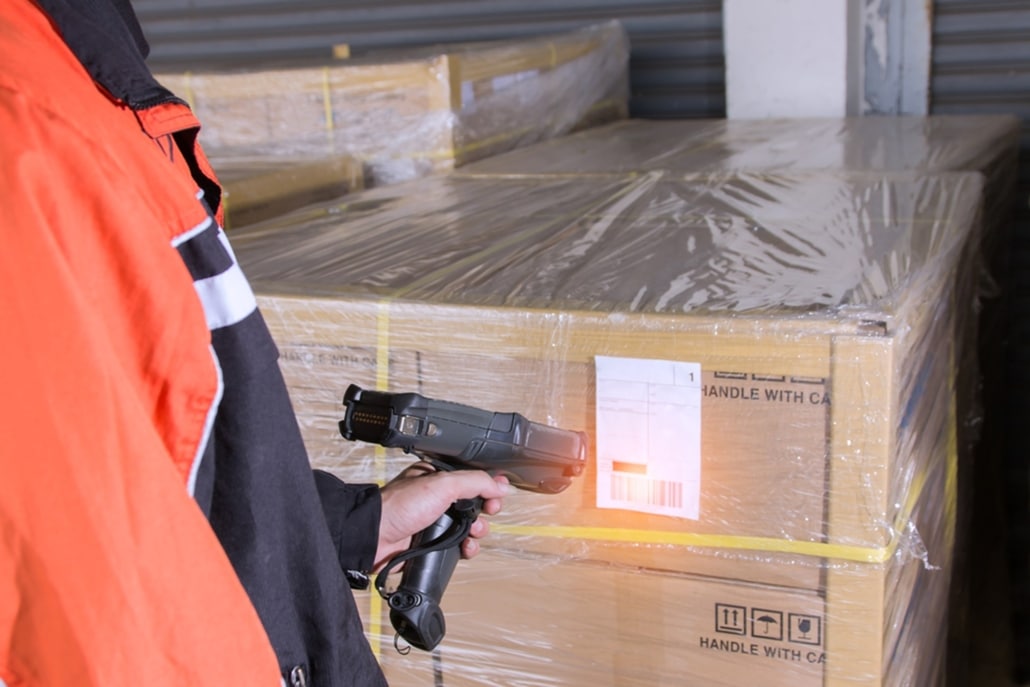
The receiving dock is the critical starting point of any warehousing operation. Every item that arrives represents a commitment—a promise to deliver quality and reliability to the end customer. The receiving process, therefore, is not just about handling goods; it’s about upholding the integrity of the entire supply chain.
However, the challenges are real. Mistakes in the receiving process can trigger a domino effect of issues. Inventory miscounts can lead to stock discrepancies, affecting timely order fulfillment. Damaged items not only result in financial losses but can also tarnish a company’s reputation. Moreover, delays or inefficiencies at this stage can bottleneck subsequent operations, causing missed delivery timelines and customer dissatisfaction.
For those in the warehousing industry, the importance of getting the receiving process right cannot be overstated. It’s the anchor that holds together all subsequent warehouse activities. With the right strategies, tools, and diligence, the receiving dock can be transformed into a powerhouse of efficiency and accuracy, setting the tone for success throughout the warehouse.
With that said, let’s dive into the essential processes, best practices, and strategies that define effective warehouse receiving. By understanding and mastering these key elements, warehousing professionals can ensure optimal operations from the receiving dock to the customer’s door.
Warehouse receiving is a multifaceted process, and understanding the basic components is the first step toward optimization. Here’s a breakdown of the receiving process:

Warehouse receiving, while foundational to operations, is riddled with challenges that can disrupt the flow of the entire supply chain. Recognizing these challenges is the first step toward addressing them effectively:
Inconsistent Supplier Deliveries:
Whether it’s unexpected delivery times, inaccurate shipment quantities, or varying product quality, inconsistencies from suppliers can throw off the receiving process and lead to operational hiccups.
Handling Peak Seasons:
During peak seasons, the volume of incoming shipments can surge, putting strain on the receiving dock. Managing this influx without delays or errors becomes a significant challenge.
Managing Returns:
Returns, whether due to damaged goods or incorrect shipments, introduce additional complexities. Efficiently processing returns while ensuring inventory accuracy is a delicate balancing act.
Space Constraints:
Limited space at the receiving dock can lead to congestion, especially when large shipments arrive simultaneously. This can result in inefficiencies and potential damage to goods.
Documentation Discrepancies:
Mismatches between the received goods and the accompanying documentation (like purchase orders or packing lists) can lead to confusion, delays, and potential financial discrepancies.
Human Errors:
Manual processes, especially in tasks like counting or data entry, are prone to errors. These mistakes, even if minor, can have cascading effects on inventory accuracy and order fulfillment.
Safety Concerns:
The receiving dock can be a hub of activity, with goods being unloaded, moved, and processed. Ensuring the safety of staff amidst this bustle, especially with heavy machinery in operation, is a constant challenge.
To elevate your warehouse receiving operations, it’s essential to integrate industry-leading best practices. Here’s a more in-depth look:
Why it matters: A consistent approach to receiving ensures that every team member knows their role, reducing the chances of errors and oversights.
How to implement: Create a detailed receiving manual that outlines every step of the process. Regularly review and update this manual to accommodate changes in operations or technology.
Why it matters: In the digital age, relying solely on manual processes can lead to inefficiencies and errors.
How to implement: Adopt a robust Warehouse Management System (WMS) like Cadre Technologies’ solution. Our platform eliminates the need for separate inventory management systems. With our software, you can automate time-consuming tasks like inventory updates, documentation verification, and access predictive analytics for better decision-making.
Why it matters: As the warehousing industry evolves, new challenges and solutions emerge. Keeping your team updated ensures they’re equipped to handle modern-day challenges.
How to implement: Schedule regular training sessions, workshops, or even webinars. Focus on areas like safety protocols, technology tool usage, and updates in warehousing best practices.
Why it matters: A strong partnership with suppliers can streamline the receiving process, ensuring timely deliveries and accurate shipments.
How to implement: Maintain open communication channels with vendors. Schedule regular check-ins, provide feedback on shipment quality, and collaborate on optimizing delivery schedules.
Why it matters: Even with the best processes in place, there’s always room for improvement. Regular audits can identify inefficiencies or areas that need refinement.
How to implement: Designate a team or third-party service to conduct periodic audits of the receiving process. Use the feedback to refine operations and implement necessary changes.
Why it matters: Beyond quantity, ensuring the quality of received goods is paramount. This prevents issues like customer complaints or returns due to defective products.
How to implement: Design a quality control protocol where random samples from received shipments are inspected for defects or quality issues. Train your team on what to look for and how to address any identified issues.
Why it matters: The receiving area can be bustling with activity, making it a hotspot for potential accidents.
How to implement: Ensure all staff are trained in safety protocols. This includes proper equipment usage, handling hazardous materials, and emergency procedures. Regularly inspect the receiving area for potential hazards and address them promptly.

Optimizing the entire receiving process, from start to finish, can significantly elevate the broader warehouse operations. Here’s a look at the substantial advantages that stem from such improvements:
Enhanced Inventory Accuracy:
A streamlined receiving process ensures that every item entering the warehouse is accurately logged. This precision forms the foundation for effective inventory management, eliminating unexpected stockouts and reducing holding costs.
Streamlined Order Fulfillment:
With accurate receiving, the inventory data is always up-to-date. This means that the order fulfillment team operates with real-time information on stock availability, leading to faster order turnaround times and increased customer satisfaction.
Cost Efficiency:
An optimized receiving process minimizes additional costs that arise from handling returns, rectifying inventory errors, or unplanned overtime. Over time, these efficiencies translate to tangible cost savings, boosting the warehouse’s profitability.
Building Customer Trust:
When receiving processes are accurate and efficient, it ensures that products are available, orders are accurate, and shipments are timely. This reliability bolsters customer trust, leading to brand loyalty, positive reviews, and repeat business.
Operational Synergy:
An efficient receiving process sets a positive tone for the day’s operations, creating a rhythm and flow that other departments can sync with. This synergy ensures that subsequent processes, from storage to dispatch, operate smoothly, reducing friction and enhancing overall productivity.
Safety and Compliance:
A well-organized receiving process prioritizes safety, reducing the chances of accidents on the dock. Additionally, by ensuring that all received items are correctly documented and stored, warehouses can maintain compliance with regulatory standards.
Optimized Resource Allocation:
With a streamlined receiving process, manpower and equipment are used more efficiently. This optimization reduces idle times, ensures equipment is used optimally, and allows staff to focus on tasks that add value to the warehousing operation.
Proactive Problem Resolution:
By catching issues at the receiving stage, whether it’s damaged goods or inventory discrepancies, warehouses can address problems before they escalate. This proactive approach reduces the long-term impact of such issues on operations and customer relations.

The integration of technology into warehouse operations has revolutionized the way goods are received, processed, and stored. Here’s an in-depth look at some pivotal tools and technologies:
Want to learn more about the capabilities of our software? Take a deeper look at our top Warehouse Receiving Features.

To ensure that the receiving process remains at its peak performance, it’s crucial to keep a close eye on specific metrics and KPIs. These indicators provide insights into the health of your operations, allowing for timely adjustments and continuous improvement:
Receiving Accuracy Rate: Measures the percentage of shipments received without errors.
Dock-to-Stock Time: The time taken from when goods arrive at the dock to when they’re available in inventory.
Rate of Return: The percentage of received goods that are returned due to damages or discrepancies.
Receiving Efficiency Rate:
The number of items received per hour or per employee.
Cost Per Receipt:
The total cost associated with receiving a shipment, including labor, equipment, and overhead costs.
By closely monitoring these KPIs and metrics, warehousing professionals can gain valuable insights into their receiving operations, identify areas of improvement, and implement strategies to achieve operational excellence.
The warehousing industry is in a constant state of evolution, driven by technological advancements and changing consumer demands. As we look to the horizon, several emerging trends promise to reshape the landscape of warehouse receiving.
Artificial Intelligence (AI) is poised to play a pivotal role in the future of warehouse operations. With AI-driven predictions, warehouse will be able to better anticipate delivery times, potential discrepancies, and even suggest optimal storage solutions based on incoming shipments. This proactive approach, powered by machine learning and data analytics, will enable warehouses to optimize their receiving processes, reducing errors and enhancing efficiency.
Drone technology, once a concept of science fiction, may become a reality in the logistics sector. If drone deliveries gain traction, receiving docks will need to adapt to accommodate aerial deliveries. This shift will introduce new challenges, such as airspace management and drone traffic coordination, but will also offer the potential for faster and more flexible delivery options.
Advanced robotics is another trend that’s set to revolutionize warehouse receiving. Robots equipped with sensors, AI, and machine learning capabilities will assist in unloading, counting, and even inspecting goods. These robotic solutions will not only automate manual tasks but also bring a level of precision and consistency that’s hard to achieve with human labor alone.
Furthermore, the integration of the Internet of Things (IoT) in warehousing will provide real-time tracking and monitoring of goods from the point of origin to the receiving dock. This seamless connectivity will offer unparalleled visibility into the supply chain, ensuring that receiving processes are aligned with the broader logistics ecosystem.
In this ever-evolving landscape, staying abreast of these trends and being adaptable will be crucial for warehousing professionals. Embracing these innovations will not only enhance the receiving process but also set the stage for a more agile, efficient, and future-ready warehouse operation.
Warehouse receiving is more than just the initial step in the supply chain; it’s the foundation upon which the entire warehousing operation is built. As we’ve explored in this guide, optimizing your warehouse receiving process can lead to ripple effects of efficiency, accuracy, and customer satisfaction throughout the entire supply chain. From leveraging cutting-edge technologies to understanding and mitigating common pitfalls, there’s a myriad of strategies that warehousing professionals can employ to ensure their receiving operations are top-notch.
As the warehousing industry continues to evolve, staying informed and adaptable is key. Embracing innovations, continuously monitoring performance metrics, and being proactive in addressing challenges will set the stage for a future-ready warehouse operation.
For those seeking to elevate their warehouse receiving processes, Cadre Technologies offers robust solutions tailored to the unique needs of modern warehouses. Our expertise and tools are designed to empower warehousing professionals, ensuring that every item received is a step toward operational excellence.
Interested in learning more? Reach out to us today and let’s embark on a journey to redefine your warehouse receiving operations.